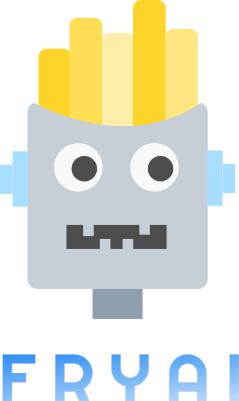- FryAI
- Posts
- Try Google's new image generator
Try Google's new image generator

Good morning! Let’s fry away those Monday blues with a hot serving of AI insights. 🔥
🤯 MYSTERY AI LINK 🤯
(The mystery link can lead to ANYTHING AI-related: tools, memes, articles, videos, and more…)
Today’s Menu
Appetizer: Google releases Imagen 3 to U.S. users 📸
Entrée: Artists achieve pivotal legal victory over AI 👨⚖️
Dessert: Reporter uses AI to fabricate stories and quotes 👀
🔨 AI FINANCE TOOLS OF THE DAY
🎶 Udio 1.5: Create music with one click. → Check it out
📊 Text2Infographic: Create infographics in seconds from text prompts. → Check it out
👑 Kingdom: Build your own virtual civilization. → Check it out
GOOGLE RELEASES IMAGEN 3 TO U.S. USERS 📸
Q: Where’s the best place to hide your deepest, darkest secrets?
A: The second page of Google. 😅
What’s new? Google’s Imagen 3, the latest version of its AI text-to-image generator, is now available to users in the U.S. through the AI Test Kitchen.
How does it work? Imagen 3 allows users to generate detailed images from text prompts and even offers editing capabilities by highlighting and modifying specific sections.
Why is this important? Image and video generation is all the rage right now, and Google wants back in on the party after its Gemini image creation disaster earlier this year. While the new Imagen 3 tool includes guardrails to prevent the generation of images featuring public figures or weapons, users have found ways to create images resembling well-known characters like Sonic the Hedgehog and Mario. However, these loopholes pale in comparison to the free reigns of Grok-2, which people have been using to create all kinds of unrestricted images.
ARTISTS ACHIEVE PIVOTAL LEGAL VICTORY OVER AI 👨⚖️
I used to do fine arts, but then I decided I don’t like art. Now I’m doing just fine. 🙂
What happened? Artists suing AI art generators have achieved a significant legal victory.
Want the details? In a lawsuit led by Karla Ortiz, an artist who worked on films such as Black Panther and Avengers: Infinity War, it was argued that AI companies like Stability AI and Midjourney have used datasets, such as those from LAION, which include artists’ copyrighted works without permission. In response to these claims, U.S. District Judge William Orrick ruled that Stable Diffusion, an AI tool developed by Stability AI, may have been created using copyrighted works with the intent to “facilitate” infringement. While some additional claims, including breach of contract and unjust enrichment, were dismissed, the case now advances to discovery, where artists may uncover critical details about how AI firms harvested copyrighted material. This ruling allows key copyright infringement and trademark claims to move forward, marking a pivotal moment in the legal battle over the unauthorized use of billions of images scraped from the internet to train AI systems. This decision could have widespread implications for AI companies utilizing similar models, potentially exposing them to substantial damages.
“Plaintiffs have plausible allegations showing why they believe their works were included in the LAION datasets. And plaintiffs plausibly allege that the Midjourney product produces images—when their own names are used as prompts—that are similar to plaintiffs’ artistic works.”
REPORTER USES AI TO FABRICATE STORIES AND QUOTES 👀
“Are you a newspaper? Because you’ve got a new issue every day.” 😆
What happened? In a recent incident at the Cody Enterprise, a Wyoming newspaper, reporter Aaron Pelczar was found to have used generative AI to write several articles which included fake stories and quotes.
How did this happen? This discovery was made by CJ Baker, a reporter from the rival Powell Tribune, who noticed robotic phrases and fake quotes in Pelczar’s stories, including those attributed to Wyoming Governor Mark Gordon. When checked against reality, these stories and quotes were found to be fabricated. Upon this incident, Pelczar has resigned.
What’s the significance? It’s no surprise that AI is transforming journalism, and many outlets are leveraging AI for research and writing. However, even if journalists utilize AI, it remains the responsibility of the writers to fact check the stories for accuracy in an industry proliferated with fake news and skeptical viewership. As Alex Mahadevan, director of a digital media literacy project at the Poynter Institute, says, “These generative AI chatbots are programmed to give you an answer, no matter whether that answer is complete garbage or not.” As a result, journalists need to be cautious about how they use AI. Newsrooms are now being urged to develop clear policies on AI usage to prevent similar breaches of trust in the future.
MONEY MONDAY 🤑
People are discovering innovative (and sometimes wacky) ways to make money using AI. Check out today’s featured video:
HAS AI REACHED SINGULARITY? CHECK OUT THE FRY METER BELOW:
What do ya think of this latest newsletter? |



